It is mid-December and we are at the start of the coldest time of the year.
In the mornings we have to wear gloves and hats to get to work and by the time we get home to do our paperwork, the sun has been down for a few minutes.
I mean, it's cold, it's dark in the middle of the day and we really don't feel like walking around all day.
And we are not alone!
There are plenty of animals to keep us company, not least the many species of birds that wake us up every morning from early spring to late summer with their constant 'chattering' from one tree to another.
But this does not happen in winter.
There is a natural silence (or at least there should be) that reminds us that we have entered the 'great hibernation'.
But in the world of birds, 'hibernation' in the true sense of the word is not exactly what happens!
Birds are hungry, even in winter
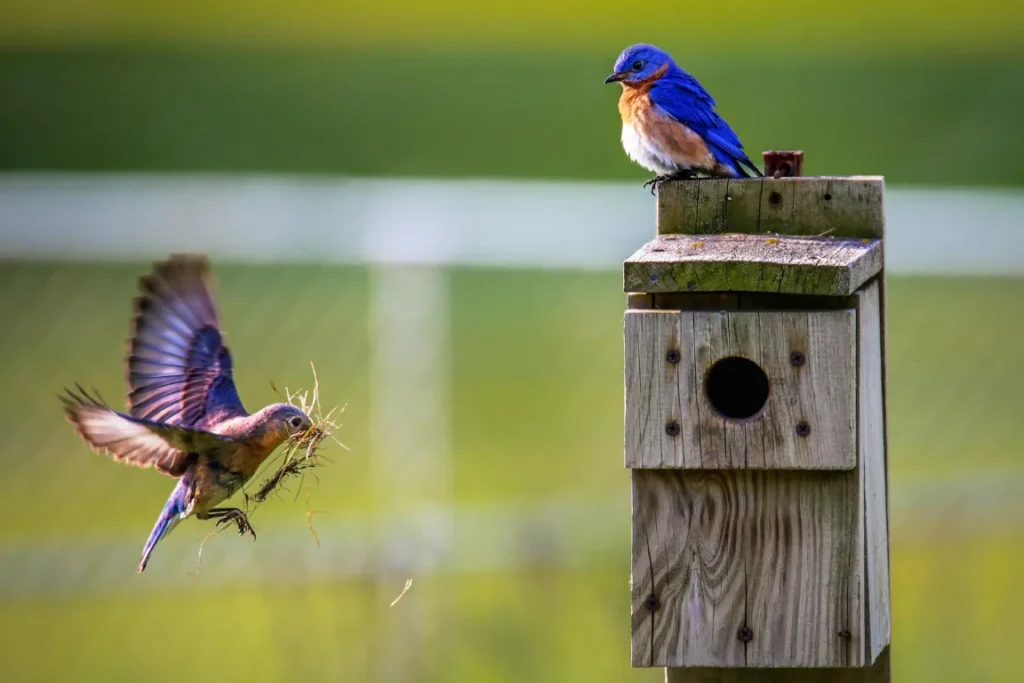
Have you ever found yourself 'face to face' with some sparrows eating outdoors, even on a cold and not exactly sunny day?
It has happened to me on several occasions and I can assure you that these cute and friendly little creatures, are far too hungry.
It is this first-hand experience that has led me to suspect that birds may be less visible in the city during the winter, not so much because they have stocked up during the spring and summer,
but rather because there is not enough food and they are too cold to go looking for it.
And voila!
Within a few hours of research and new knowledge of the world of bird food and feeding, doubt became certainty!
But this certainty was then joined by a great new doubt:
is there really nothing I can do to improve this dreadful winter for poor city birds?
And so on with new research!
And again, double voila!
I can actually improve your condition very quickly and easily!
And I imagine that if you have ended up on this page, it is because you have asked yourself exactly the same questions as I have.
And you have come to the right place!
In this space, we are going to see together how we can try to make the lives of these little urban creatures easier and more satisfying
by building together five different types of feeders, useful for all kinds of feeding and needs of these animals and ours!
Necklace feeder
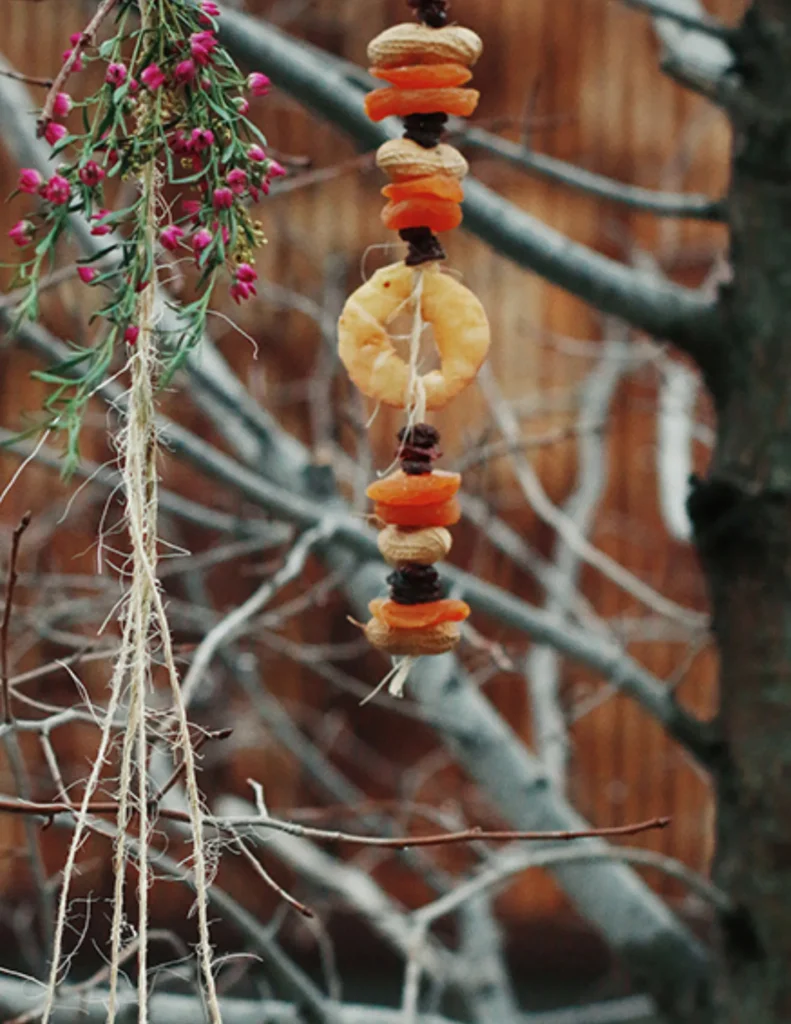
Materials:
- Peanuts with shell
- Needle
- Thread
Instructions:
- Take a piece of strong thread and a small sewing needle
- Thread the peanuts onto the thread like pearls on a necklace
- Make a knot with the two ends of the thread (just like a necklace)
- Hang the whole thing from a branch
Citrus feeder
Materials:
- Orange
- Various seeds: millet, hemp, sunflower, oats, wheat
- Strong twine
Instructions:
- Cut an orange in half
- Empty some of the orange's contents: it is better to leave some pulp attached to the peel to avoid breaking the peel, which will become the container for the feed
- Fill the peel with the seed mixture
- Make two small holes in two sides of the orange (preferably in the upper part of the peel)
- Thread twine through the holes and tie two knots at the ends of the twine (on the inside of the peel).
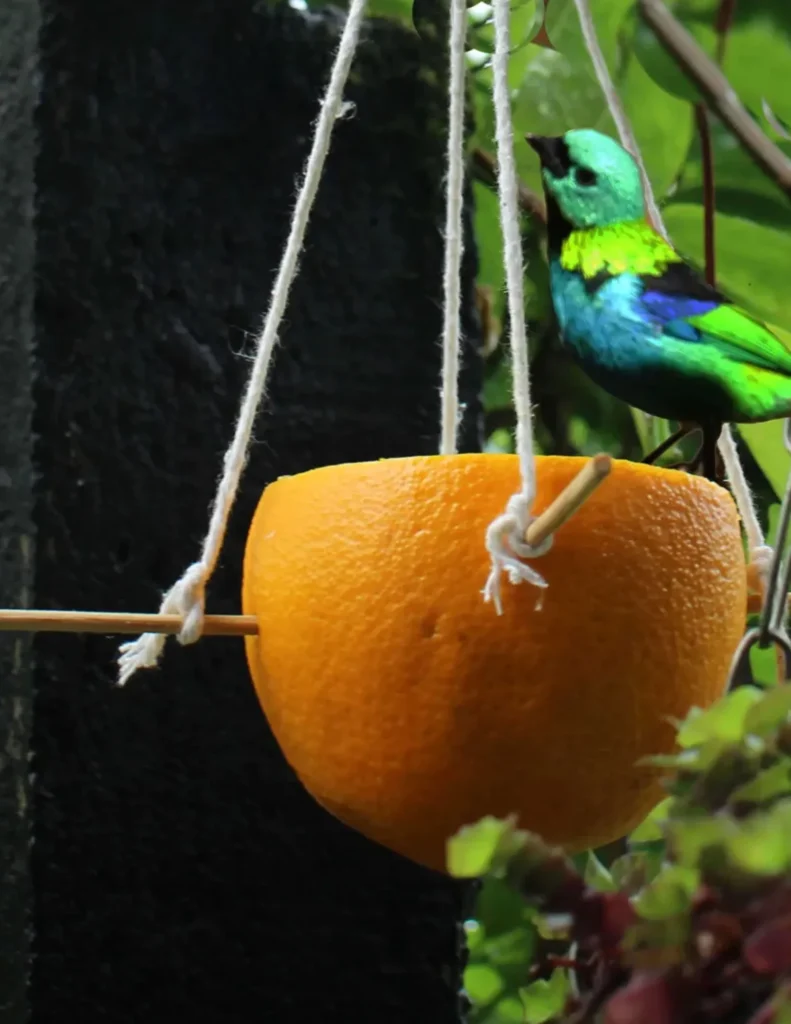
Finally, you can hang the structure from a branch or a windowsill on your balcony!
Note, however, that you are not obliged to use just one orange.
If you prefer to use the peel of another fruit as a container, you can of course do so.
Just make sure that the peel is strong enough to support both the seeds you fill it with and the various birds that come to feed on it!
Another example of a natural feeder is one made from the skin of a pumpkin.
This is very strong and will support the weight of all the birds that visit your wonderful creation!
Bottle feeder
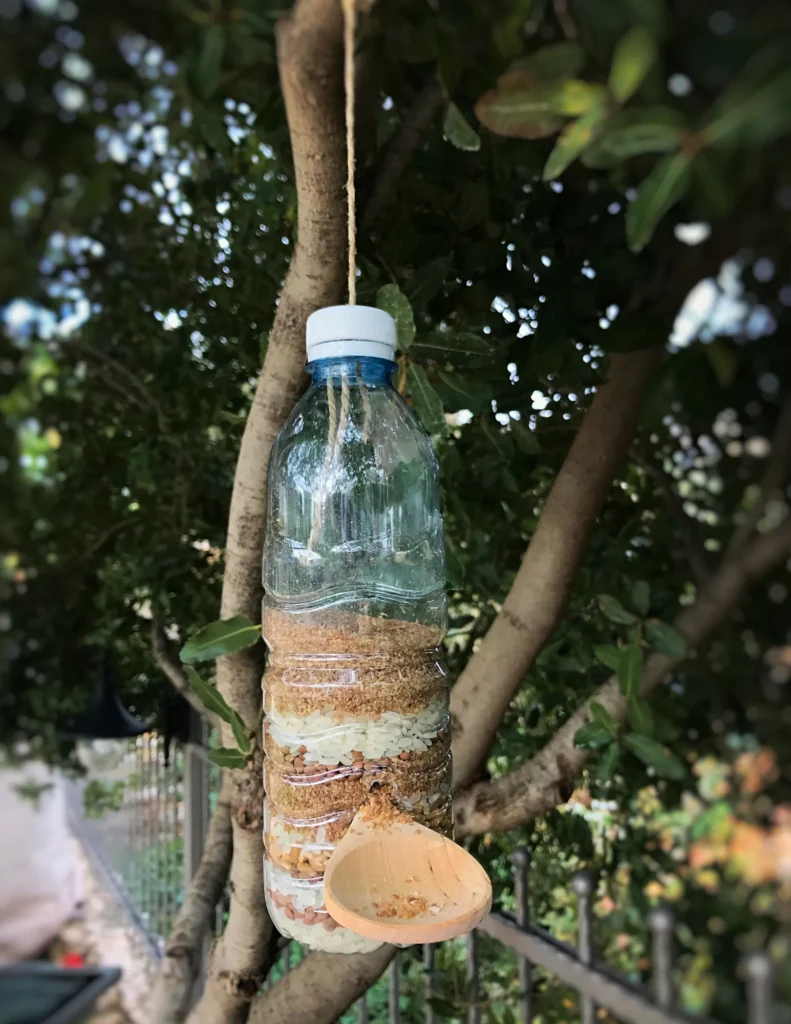
Materials:
- A half-litre plastic bottle
- A pair of scissors
- Two wooden spoons (chipboard)
- A box cutter
- A felt-tip pen
- A large bowl
- Various seeds: millet, hemp, sunflower, oats, wheat
Instructions:
- On the bottle, draw a circle (diameter of the wooden spoon handle) 5 cm from the bottom with a felt-tip pen
- Draw a half moon on the opposite side of the circle
- Cut out the two designs with the cutter
- Place the wooden spoon in the spaces of the circle and the crescent
- Fill the bottle with the seeds
- Close with the cork
- Tie a 50cm piece of string around the neck of the bottle
- Hang it on a branch or ledge on your balcony
Glass feeder
Materials:
- Empty yoghurt pots
- Twine
- Large bowl
- Lard
- Various seeds: millet, hemp, sunflower, oats, wheat
- Sultanas
- Unsalted peanuts
- Chopped nuts: walnuts and hazelnuts
- Corn flour
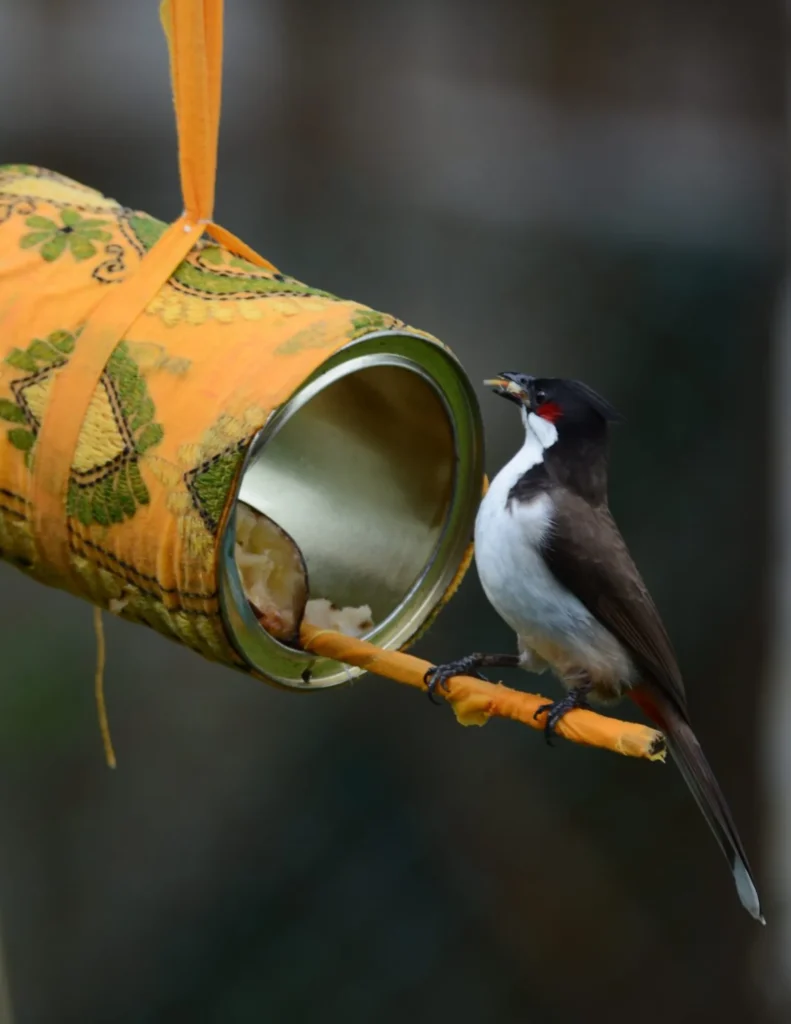
Instructions:
- Thoroughly clean the yoghurt pots
- Make a hole in the bottom of the well-cleaned yoghurt pots
- Cut a piece of string long enough: you will need this to hang your pots from a branch or ledge on your balcony
- Thread the cut string through the hole in the jar
- Tie a knot in the string on the inside of the jar to prevent it from slipping
- Allow the lard to soften at room temperature or in a bain-marie
- Once softened, cut the lard into small pieces and place in a bowl
- Add the seeds to the lard a little at a time
- Mix together until you have a firm mixture
- Pour the mixture into the yoghurt pots
- Leave to chill in the fridge for a few hours
- Hang the pots on a branch or balcony ledge
We have considered yoghurt pots as containers, but we can make the same type of feeder using a coffee or instant barley can.
These are all ways of doing good, not just for the animals that will eat in our feeders, but for the whole environment!
Between yoghurt pots and coffee cans, we are all using containers that would be thrown away in plastic and not reused in any way (at least in most cases).
Instead, we are giving these materials a second life by using them to create a convenient shelter and food source for living things.
In short, we feed hungry and cold animals, we reduce the amount of waste, and we recycle plastic to protect the climate, biodiversity and global health.
Better than that!
Metal trays with fat balls
Materials:
- Metal trough: ready-made ones can be found on the market
- Twine
- A pair of scissors
- Grease balls with seed mix: these are also readily available on the market
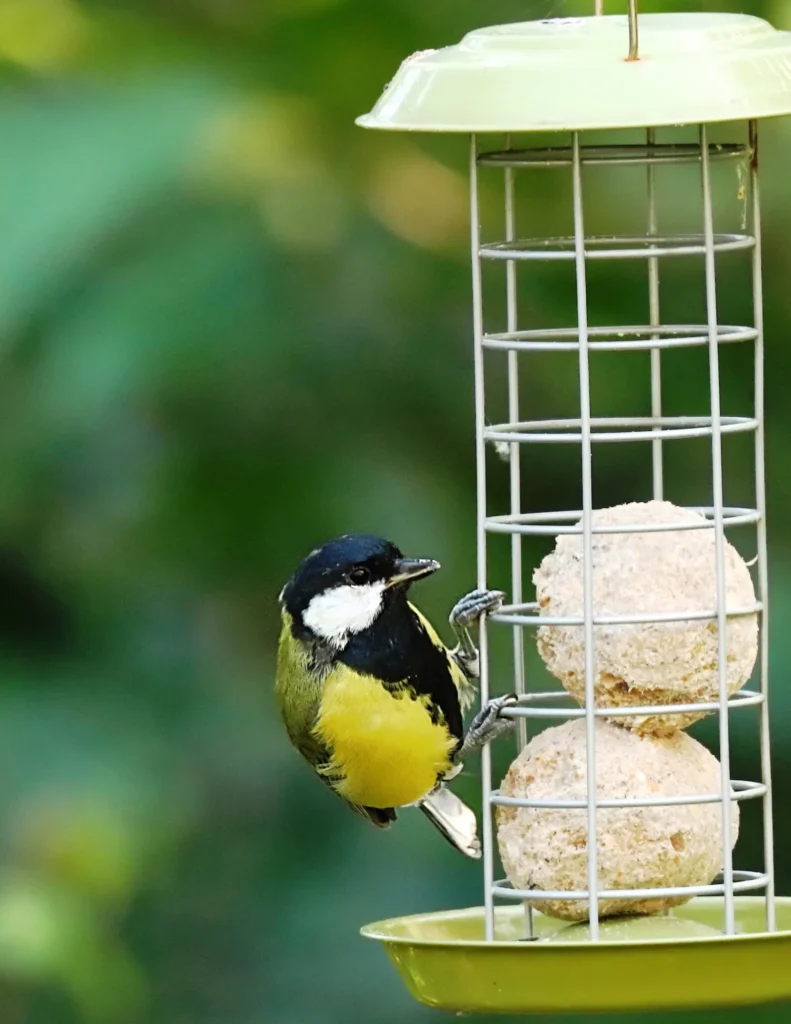
Instructions:
- Place the fat balls in the feeder
- Use a piece of string between 50 and 80 cm long: the size of the string will depend on the height from which you want to hang the feeder
- Attach the feeder to a tree or plant in the garden or on the balcony, making sure that the birds can access the feeder from any angle
And here are the 5 possible feeders that I would like to propose to you, easy to make at home and with your own hands!
But I won't leave you now, because I want to give you one last little idea, which concerns the possibility of making not only the feeder, but even the bird food yourself!
I'm talking about fat pellets.
We have already seen how you can easily buy these ready made along with the metal feeder,
but for those who are willing and have the time to get 'hands on', there is the possibility of doing this even for the bird food, and it is also very easy!
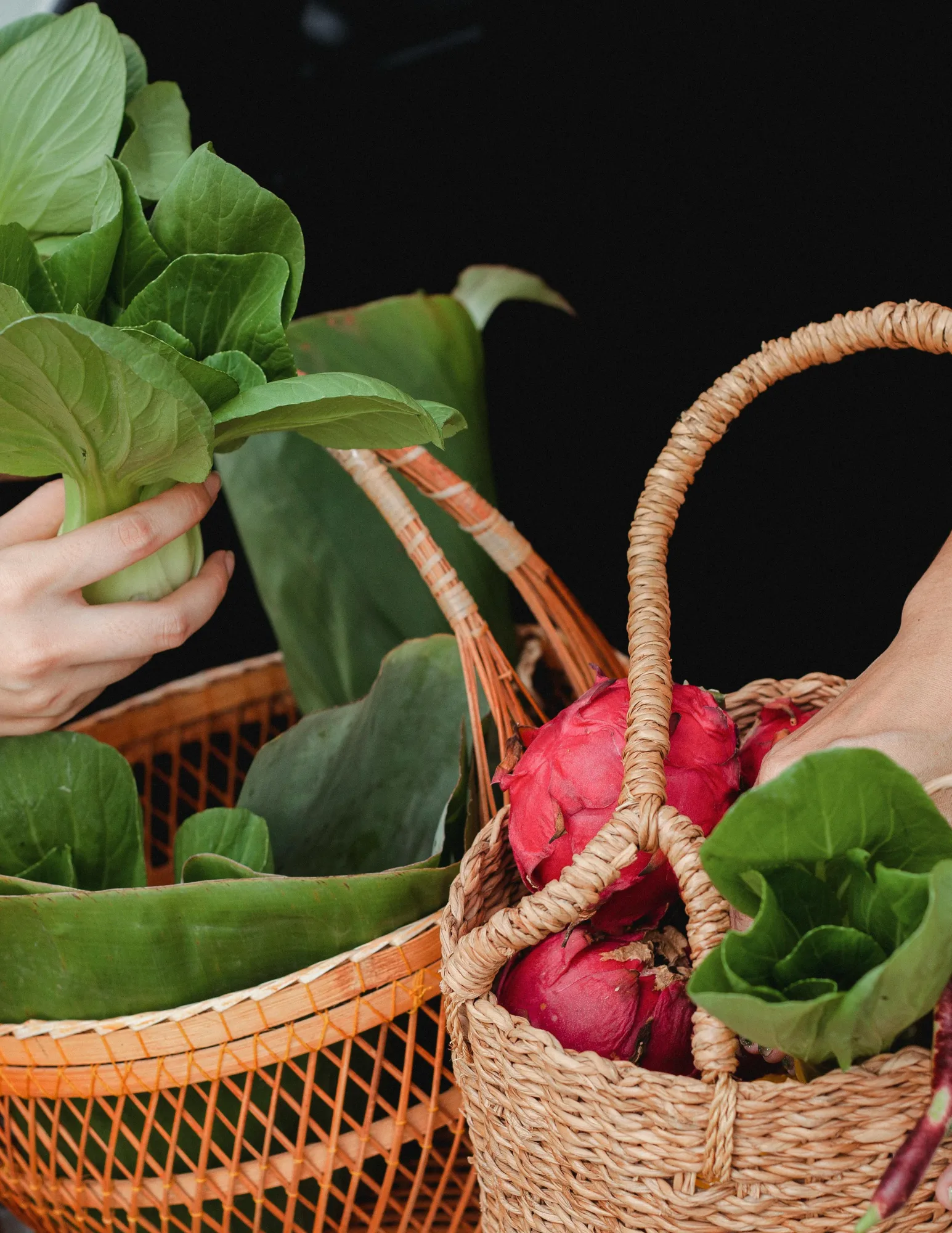
There is no end to the discovery of healthy environmental practices, and it is not easy to keep up with new ideas!
But don't panic, you've come to the right place!
Let's talk about it together and slowly discover what we can do and create for a healthier planet!!
It serves just right:
- Margarine, butter or lard
- Dry biscuits and cake crumbs (in small quantities)
- Unsalted, peeled nuts and peanuts
- Sunflower seeds, hemp seeds, millet and oats
- Sultanas to taste
- Empty jar (such as yoghurt)
Finally, the process is very short:
- Melt the margarine, butter or lard
- Crumble the dry biscuits into the melted butter
- Spelate con un coltello le noci e le arachidi
- Mix all the nuts and seeds together
- Pour the buttercream and seeds into the jar
- Wait for the mixture to set
- Remove the dough from the jar and place in the metal trough
And there you have it!
In a few simple steps, we have managed to help some small, harmless birds in our cities get through these freezing days (and nights)
so that they will be able to fly and feed on their own next spring.
Well done World!
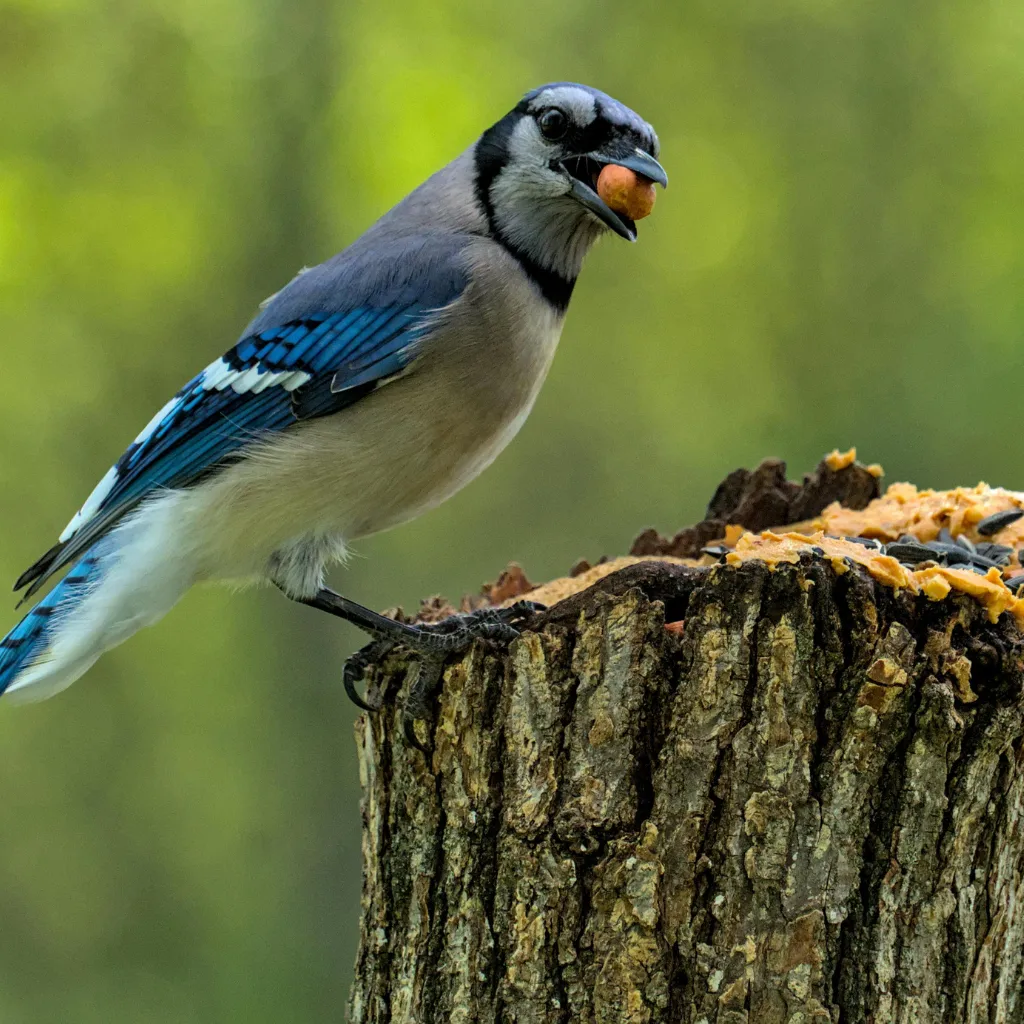
Leave a Reply